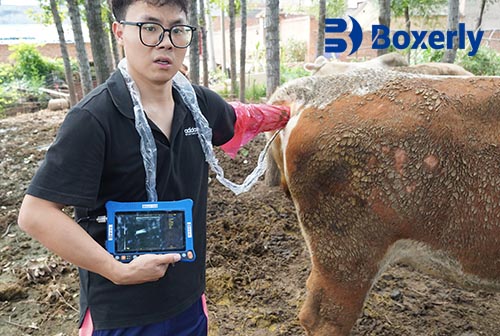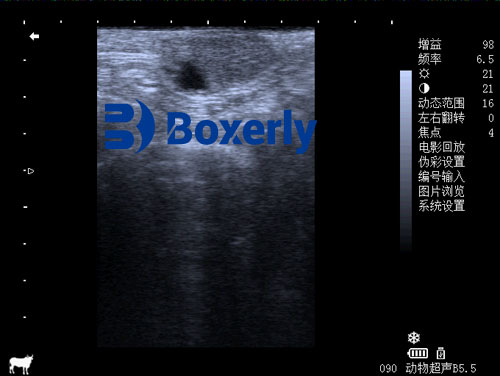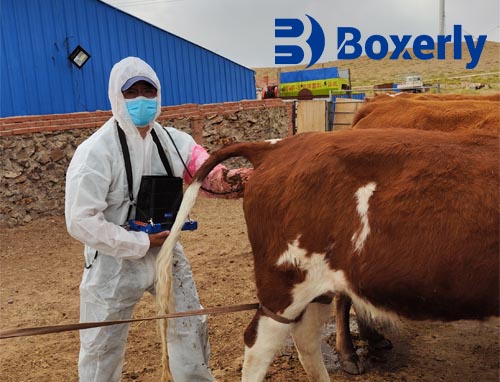As a livestock farmer or veterinary professional, investing in the right ultrasound equipment is crucial for accurate diagnostics and efficient herd management. Veterinary ultrasound technology has advanced significantly in recent years, offering various options for different clinical needs. Whether you're examining pregnancy status in cattle, diagnosing internal conditions in horses, or monitoring sheep health, choosing the appropriate ultrasound system requires careful consideration.

1. Understanding Your Practice Needs
The first step in selecting veterinary ultrasound equipment is assessing your specific requirements. Large animal practices have different needs compared to small animal clinics. Consider:
- Primary species you work with (cattle, horses, swine, etc.)
- Common procedures performed (pregnancy checks, organ examinations)
- Frequency of ultrasound use in your daily practice
- Portability requirements for farm calls
For large animal applications, durability and penetration depth become critical factors. Some manufacturers like BXL specialize in robust ultrasound systems designed specifically for large animal veterinary use.
2. Probe Selection Matters
The transducer probe is the most important component of your ultrasound system. For livestock applications, you'll typically need:
- Linear probes (5-7.5MHz) for superficial structures
- Convex probes (3.5-5MHz) for deeper abdominal scanning
- Sector probes for cardiac examinations
Consider waterproof probes for easy cleaning between animals and rugged designs that withstand farm environments.

3. Image Quality and Resolution
Look for systems offering:
- High-resolution B-mode imaging (grayscale)
- Adjustable depth settings (up to 30cm for large animals)
- Good near-field resolution for superficial structures
- Adequate far-field penetration for deep organs
Modern systems often include features like harmonic imaging and speckle reduction that significantly improve diagnostic capability.
4. Portability vs. Stationary Systems
Evaluate whether you need:
- Cart-based systems for clinic use
- Portable units with battery options for field work
- Handheld devices for quick scans
Many practitioners find mid-range portable systems offer the best balance between image quality and mobility for farm visits.

5. Software and Measurement Tools
Advanced systems provide:
- Pregnancy dating calculators
- Image measurement tools
- Storage for patient records
- DICOM compatibility for sharing images
These features can significantly improve workflow efficiency in busy practices.
6. Durability and Maintenance
Farm environments demand rugged equipment that can:
- Withstand temperature variations
- Resist dust and moisture
- Tolerate occasional rough handling
Look for systems with sealed keyboards, shock-resistant cases, and easy-to-clean surfaces.
7. Training and Support
Consider the availability of:
- Manufacturer training programs
- Technical support services
- Software updates
- Repair services
Proper training is essential for obtaining diagnostic-quality images and maximizing your equipment's potential.

8. Budget Considerations
While cost is important, consider:
- Total cost of ownership (including maintenance)
- Potential return on investment through increased services
- Financing options from manufacturers
Mid-range systems ($15,000-$30,000) often provide the best value for general livestock practice needs.
Conclusion
Selecting the right veterinary ultrasound equipment requires balancing technical specifications, clinical needs, and budget constraints. By carefully evaluating these factors, you can choose a system that will serve your practice well for years to come. Remember that the most expensive machine isn't necessarily the best fit - the ideal system is the one that meets your specific diagnostic requirements while being practical for your working environment.
For large animal specialists, exploring options from manufacturers with specific expertise in livestock ultrasound, like BXL, can provide solutions tailored to the unique challenges of farm veterinary medicine. Regular equipment demonstrations and hands-on trials are highly recommended before making your final decision.
tags:


